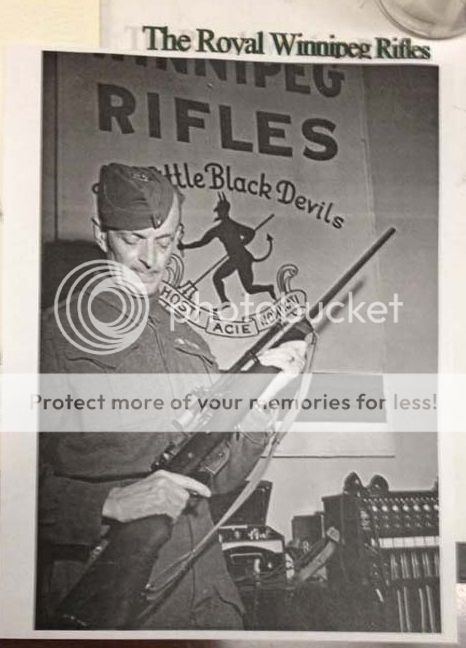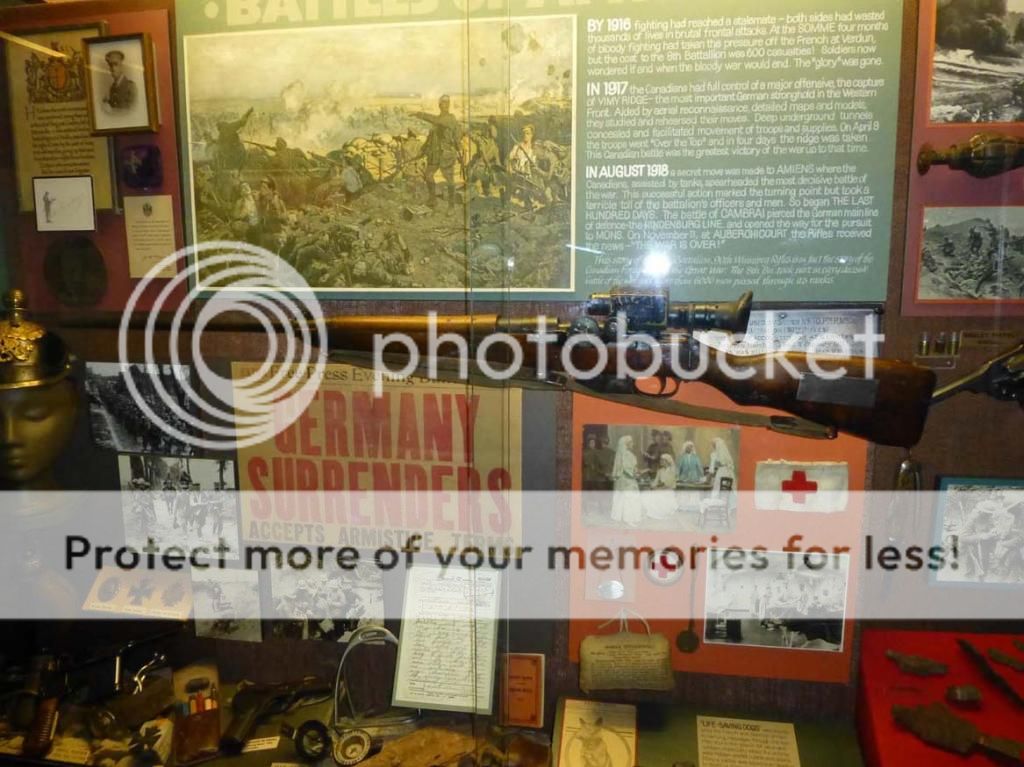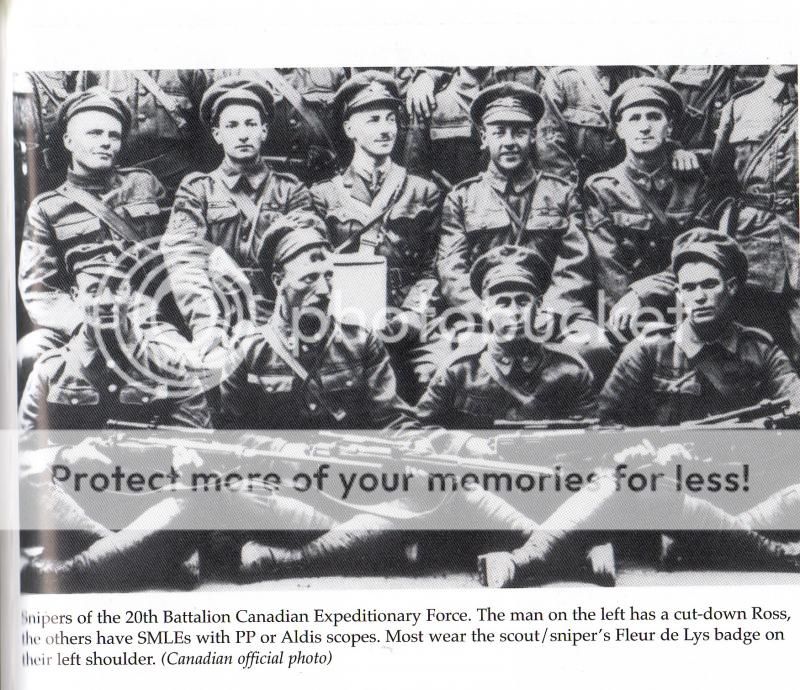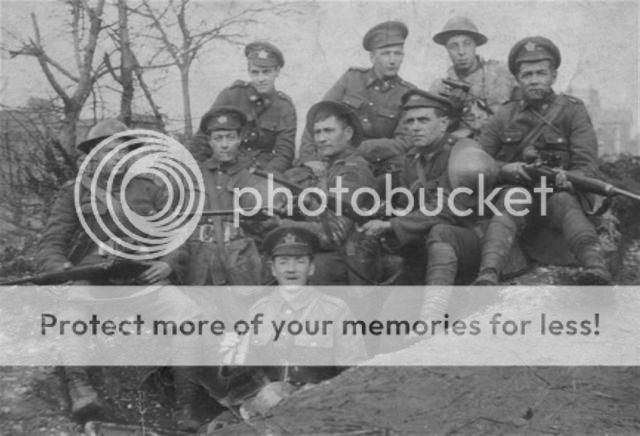.
SMELLIE and I have often had a discussion on the "sporterized" Ross rifles that are seen on the Forum, at Gun Shows, and are otherwise found. When the Ross was " exchanged" for the SMLE rifles, they were still retained for the use of the Snipers.
In looking at a lot of pictures of Canadian Snipers, a very large percentage of the pictures have Ross Rifles with the forestock cut down to just ahead of the middle band. While I was researching some War Trophies lately, I found these two pictures. One is a WW2 picture and the other is the Regimental Museum. Both of these WWI Sniper Rifles have the forestock cut off.


One premise we kick back and forth is that many of the Ross rifles were modified at a Unit level to provide more accurate rifles for the short to medium ranges that were typical in between trenches. Something like a "Designated Marksman" rifle of today. The workmanship seems to be too good for the typical "basement Bubba" and the fore-ends are remarkably similar in style.
The other side of this is that many of the Ross Rifles were Factory Sporterized by English Trade Gunmakers after they became surplus. These rifles have the usual Proof Marks on them.
BUT, there are a lot of "sporterized" Ross Rifles out there WITHOUT the standard English Proof Marks on them too. It would seem to indicate that these rifles were NOT modified in England as British Proof Laws are very explicit.
An interesting Enigma. Anyone have any thoughts on this, pro or con?
.
SMELLIE and I have often had a discussion on the "sporterized" Ross rifles that are seen on the Forum, at Gun Shows, and are otherwise found. When the Ross was " exchanged" for the SMLE rifles, they were still retained for the use of the Snipers.
In looking at a lot of pictures of Canadian Snipers, a very large percentage of the pictures have Ross Rifles with the forestock cut down to just ahead of the middle band. While I was researching some War Trophies lately, I found these two pictures. One is a WW2 picture and the other is the Regimental Museum. Both of these WWI Sniper Rifles have the forestock cut off.


One premise we kick back and forth is that many of the Ross rifles were modified at a Unit level to provide more accurate rifles for the short to medium ranges that were typical in between trenches. Something like a "Designated Marksman" rifle of today. The workmanship seems to be too good for the typical "basement Bubba" and the fore-ends are remarkably similar in style.
The other side of this is that many of the Ross Rifles were Factory Sporterized by English Trade Gunmakers after they became surplus. These rifles have the usual Proof Marks on them.
BUT, there are a lot of "sporterized" Ross Rifles out there WITHOUT the standard English Proof Marks on them too. It would seem to indicate that these rifles were NOT modified in England as British Proof Laws are very explicit.
An interesting Enigma. Anyone have any thoughts on this, pro or con?
.














































































